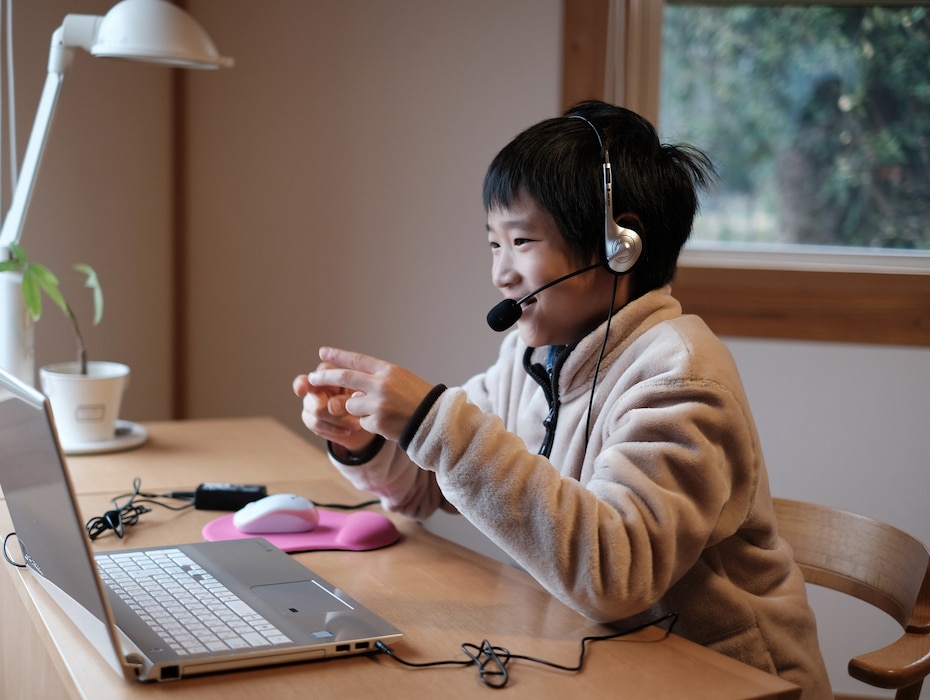Highlights:
- Because phone calls are easy to set up, teachers and parents often choose voice as the preferred communication channel.
- Voice-activated technologies have several uses in the classroom, from facilitating parent-teacher communication to creating auditory learning content.
- RingCentral’s robust voice features enable multiple use cases in educational settings.
👩🏫 💻 📚 Need a refresher on virtual learning best practices? Grab our eBook for tips, techniques, and tools.
Since 2020, the video call has become a feature of work life. As workplaces and classrooms moved online, people found themselves in video classes and meetings, sometimes all day, every day.
However, after some time spent on video calls, the humble voice connection is making a resurgence.
Stay informed with RingCentral
How voice technologies will transform education
In the coming years, cloud-based communications for education will transform schools. Here’s how voice technologies could take their place in your classroom.
Start with a phone call
Phone communication still remains a powerful way for schools to communicate with parents, students, and teachers. As technology improves, cloud-based technologies allow teaching and administrative staff to integrate student and parent information and voice calling.
New cloud-based communications for education also allow you to have number masking technology, so that teachers and administrators can call from their mobile devices while maintaining professionalism and confidentiality.
For many students and parents, a phone call is much easier to arrange than a video chat. Phone calls remain an easy, accessible way to communicate.
Use voice technology for school offices
For your administrative staff, voice technology improvements can be transformational. Automating some parts of your phone, text, and online chat systems can free up valuable administrative time.
Voice tech has become better at recognizing patterns and making predictions. Voice-activated tech can help parents and students get more information while office staff manage the most urgent and unique calls. Combining these voice tools with online chat bots can lead to happier parents, students, and staff who can communicate more efficiently with the assistance of technology.
Talking with technology is comfortable
Today, people don’t just talk with people; they also talk to their technology. 65 percent of 25 to 49-year-olds talk with their technology on a daily basis. Whether they are taking voice notes or using a GPS for directions, today’s students and parents are ready for voice technology to play a more active role in education. What could the role of voice technology look like as it moves into the classroom?
Use voice-activated typing for students and teachers
For students and teachers, voice-activated typing can increase accessibility and efficiency. Students and teachers with disabilities can use voice-activated tools to complete assignments, while new typists can also use voice-activated technologies to document their thoughts in class.
Utilize voice to text to help with meetings and presentations
Voice to text can also save you and your students typing time. If you’re in a work meeting or a class presentation that must be documented or summarized, you can turn on live transcriptions for work meetings, creating meeting minutes or short meeting notes. As you and your students present, you can also activate automatic voice-to-text captions for presentations, making presentations more accessible to everyone.
Create natural learning experiences using voice technology
Voice technology can also help students learn and share with each other. Children grow up learning from the voices of those around them. When it comes to technology, learning from voice technology is the most natural digital learning experience.
5G technology will enhance this experience. Students will be able to talk and browse the web together, look at photos and videos from each others’ phones, or play games together online. 5G will allow students to have a more human experience, even if they are working in a digital classroom environment.
Use voice assistants for directions and questions
Assistants like Siri and Alexa have a more natural, more human form of conversation. As a teacher, you can use voice technology to help support classroom learning.
Children, in particular, find them easier to engage with than a search engine. It’s easier for students to follow directions from a voice assistant or ask questions to a voice assistant.
Open new opportunities for learning
Students gravitate toward new technology. For learning such as quizzes, consider turning them into a game using a voice assistant. You can also combine voice technology with words and pictures to quiz students.
Create auditory learning content
Voice tools are a way to access information and a way for students to create it as well. With a voice tool, students can access podcasts and record them. They can record presentations or record their auditory environments, adding information to their classroom inquiries. What bird did they hear on a field trip? They can add their audio content and use voice technology to find out.
Voice assistants can be teaching assistants
As teachers collect information and assess students in the classroom, they can use voice assistants to collect data about student progress or information about student presentations.
Voice assistants can also help you connect with students more as you listen to an audiobook. Using a voice assistant as a reading tool allows you to interact with students as someone else reads the material.
Teachers can also use a voice assistant to help set reminders for the classroom or set alarms for students so that your class can move on to another activity. Voice assistants are also quite intuitive for students to use, and they can help with basic questions for assignments. When students may not all have a digital device in class, they can use a voice-activated assistant.

Voice assistants can help early readers
Much of the interest in voice technology has focused on early readers, who can read to a voice assistant. The advances in voice technology allow it to both provide feedback to the child and to help correct the way that children pronounce words. In this way, it can act as a supplement to teachers, assistants, and classroom volunteers who cannot listen to every child in every reading group at once.

Create an atmosphere in the classroom or the office
Voice-activated technologies can set a mood in the school, office, or classroom. Using voice technologies, you can set ambient music, sounds, or white noise to relax students and create a positive atmosphere in the classroom.
Are you trying to improve voice-based communications in your school? Talk with us at RingCentral. Upgrade your campus communications today.
Originally published May 10, 2022, updated Jul 29, 2024











